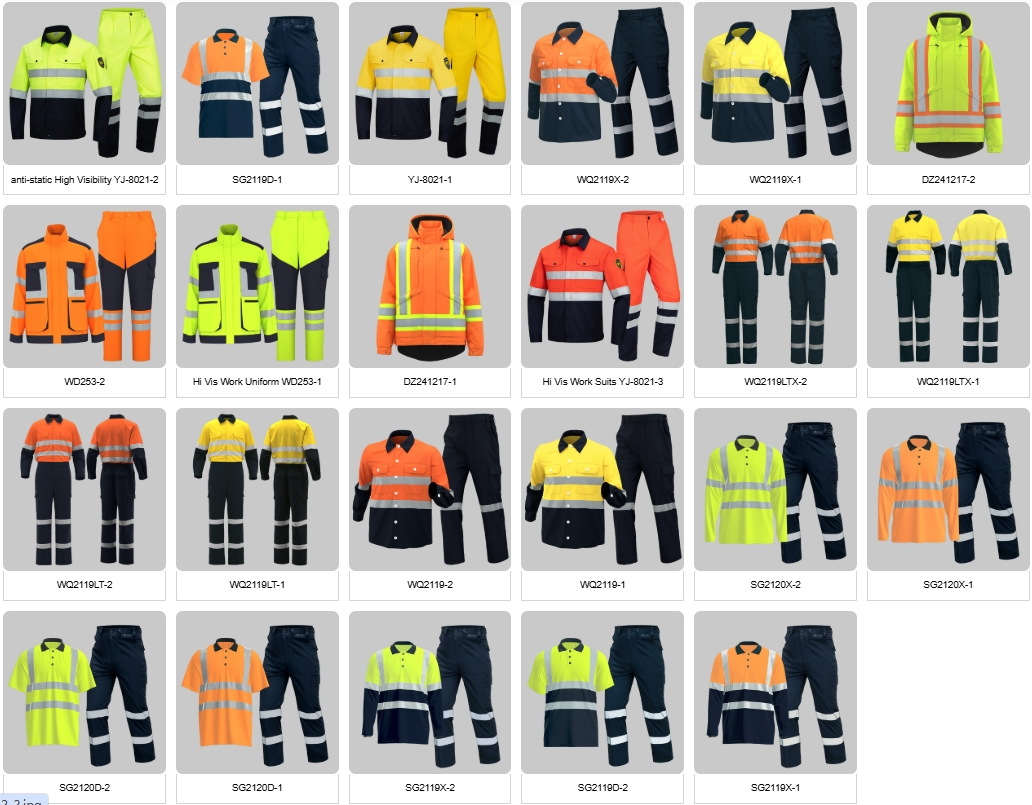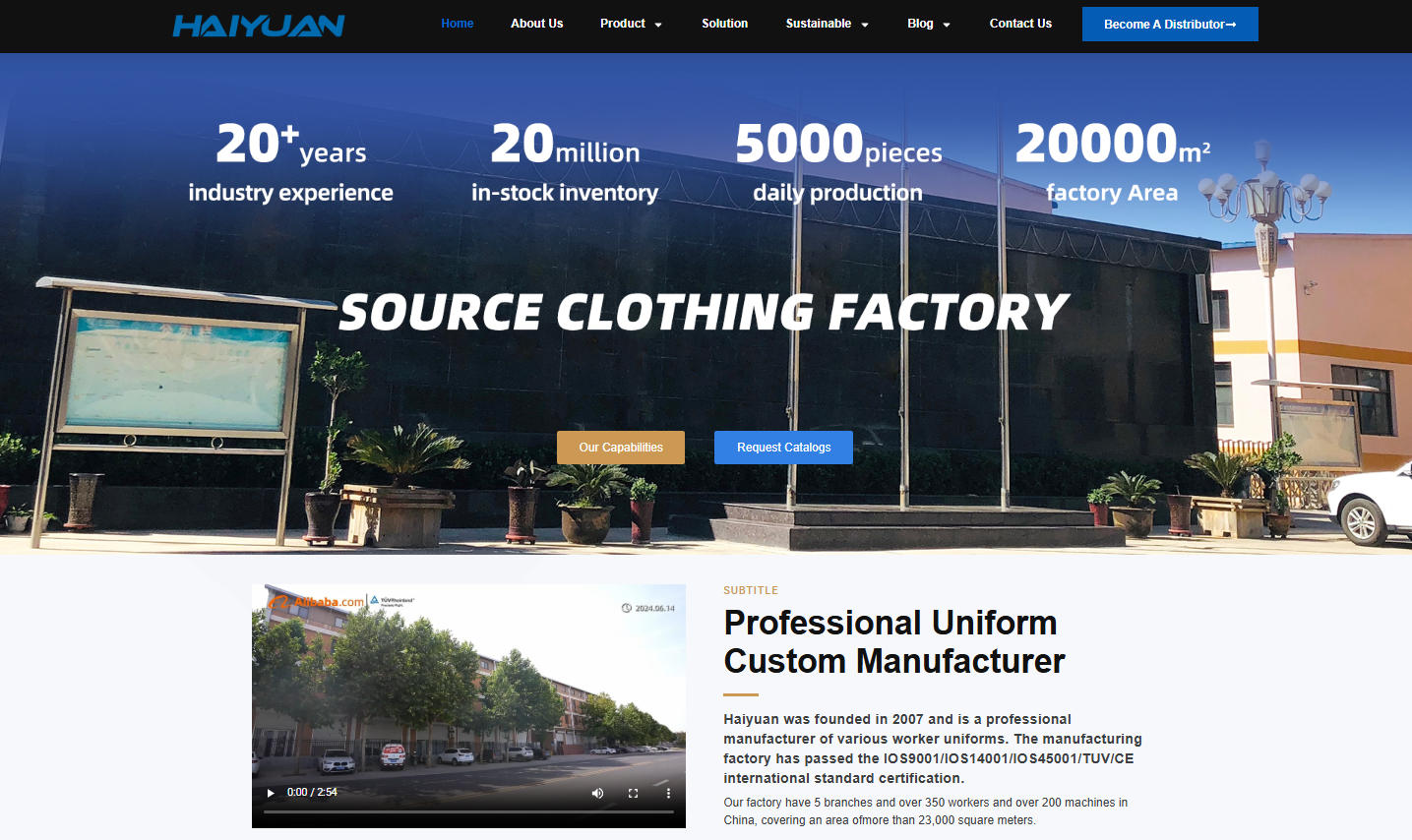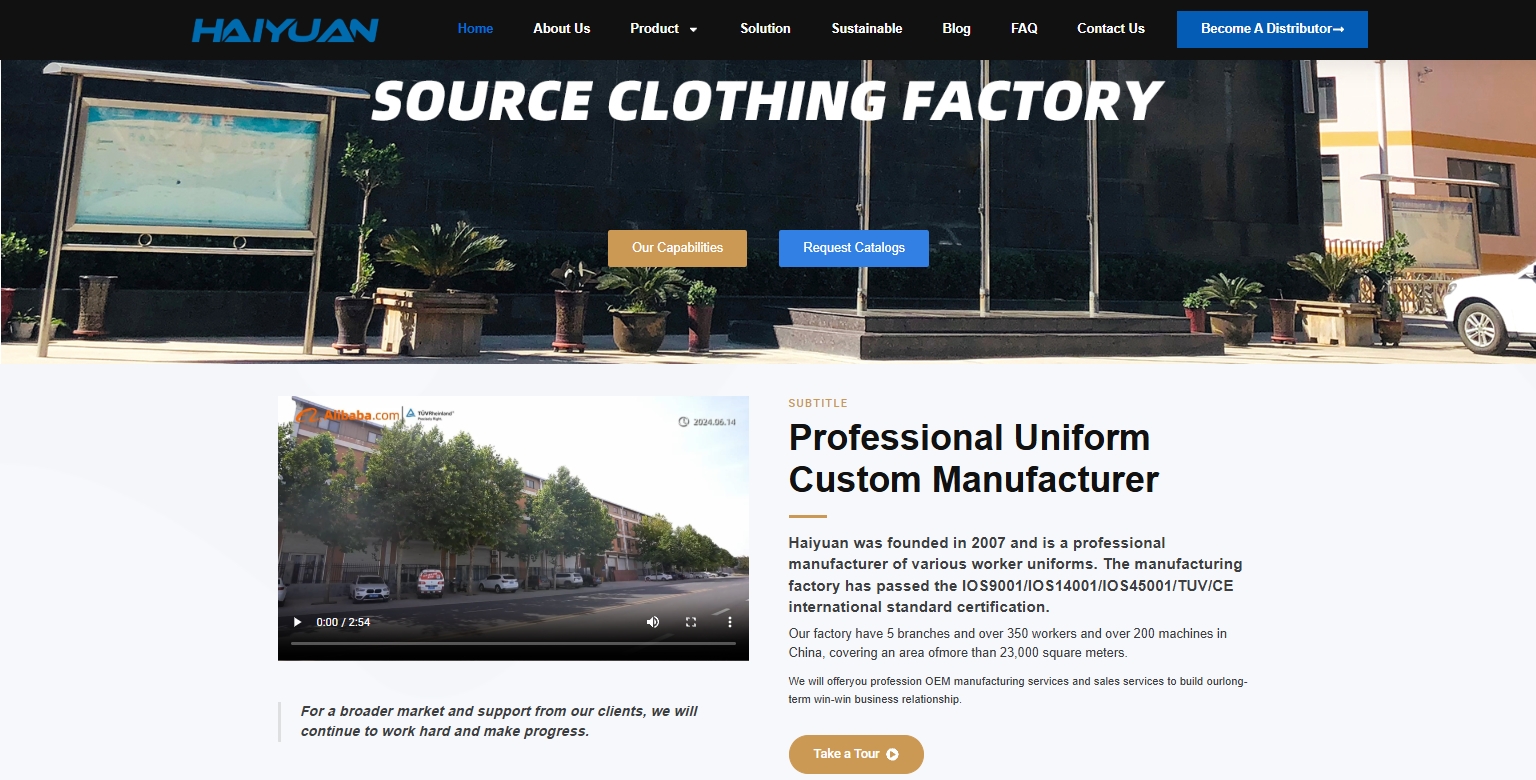A safety workwear jacket, or high-visibility (hi-vis) jacket, is a critical piece of Personal Protective Equipment (PPE). Its primary job is to make you visible and keep you safe. Choosing the right one depends on your job, environment, and the specific hazards you face.
This guide is broken down into four essential steps:
-
Understand the Safety Standards (The Most Important Step)
-
Identify the Right Type and Style for Your Job
-
Evaluate Key Features & Materials
-
Review Top Brands and Recommendations
Step 1: Understand the Safety Standards
Safety jackets are classified by standards that define the amount of background and reflective material. Ignore the standard, and you might not be legally compliant or adequately protected.
-
ANSI/ISEA 107 (North America):
-
Class 1: Lowest visibility. For workers separated from traffic and operating at speeds under 25 mph. (e.g., parking lot attendants).
-
Class 2: Intermediate visibility. For workers near traffic between 25-50 mph or in inclement weather. (e.g., road construction crews, school crossing guards, airport baggage handlers).
-
Class 3: Highest visibility for torso and limbs. For workers in high-risk environments with traffic over 50 mph and complex backgrounds. (e.g., highway construction, emergency responders, utility workers).
-
Class E (Pants): Supplemental pants for when Class 3 coverage is required.

hi vis clothes
-
-
EN ISO 20471 (European Union / International):
-
Class 1: Low risk. (e.g., in warehouses away from vehicles).
-
Class 2: Intermediate risk. (e.g., garbage collectors, railway platform staff).
-
Class 3: High risk. (e.g., emergency services, high-speed road work).
-
Your Guide’s Rule #1: Always check your local regulations and company safety policy. They will specify the required class for your task.
Step 2: Identify the Right Type and Style
Safety jackets come in various styles tailored to different jobs and weather conditions.
| Type | Best For | Pros | Cons |
|---|---|---|---|
| Hi-Vis Safety Vests | Warm weather, short-term use, sites where torso protection isn’t needed. | Lightweight, breathable, inexpensive. | No warmth or weather protection, less durable. |
| Mesh / Breathable Jackets | High-activity jobs in warm climates. Summer use. | Excellent airflow, lightweight, Class 2/3 compliance. | No insulation, can snag easily. |
| Softshell Jackets | Cool, windy, and drizzly conditions. Active jobs in changeable weather. | Wind-resistant, water-resistant, breathable, stretchy for mobility. | Not for heavy rain or extreme cold. |
| Insulated & Winter Jackets | Cold climates, winter months, low-activity jobs. | Warmth (synthetic or down insulation), often waterproof, high visibility. | Can be bulky, less breathable during high activity. |
| Waterproof & Rain Jackets | Wet weather, heavy rain. | Keeps you dry, often with sealed seams, durable. | Can be less breathable, leading to sweat buildup. |
| Fire-Resistant (FR) Hi-Vis | Arc flash, flash fire, or welding hazards. (Oil & gas, electrical utilities). | Protects against flames and heat while providing visibility. | More expensive, heavier, specific care instructions. |
Step 3: Evaluate Key Features & Materials
Beyond the standard, look for these features to ensure comfort, durability, and functionality.
-
Material:
-
Polyester or Nylon: Durable, water-resistant, and quick-drying. The most common shell material.
-
Fleece/Lining: For insulation. Synthetic fleece retains warmth when wet.
-
Duck Canvas: Extremely durable and abrasion-resistant (e.g., Carhartt). Good for rugged environments like logging.
-
FR Fabrics: Like modacrylic or treated cotton, designed to self-extinguish.
-
-
Pockets & Storage:
-
Chest Pockets: For easy access to phones, pens, and small tools.
-
Internal Pockets: For secure storage of valuables.
-
Radio Loops / Pen Slots: For essential work gear.
-
Zippered Pockets: Secure your items from falling out.
-
-
Fit & Comfort:
-
Articulated Sleeves/Knees: Pre-shaped for a better range of motion.
-
Two-Way Zippers: Allow you to open the bottom for easier sitting or access to a tool belt.
-
Adjustable Cuffs/Hem: Help seal out wind and rain.
-
Venting: Underarm zippers (pit zips) are a premium feature for dumping heat.
-
-
Durability & Extras:
-
Reinforced Shoulders/Panels: Extra material in high-wear areas.
-
Scuff Guard: A protective material on the lower back or shoulders.
-
Hood: Decide if you need a hi-vis hood (often required for Class 3 in certain situations).
-
Taped Seams: Critical for true waterproofing.
-
Step 4: Top Brand Overview & Recommendations
Heritage & Durability
-
Carhartt: Known for legendary durability with their rugged duck canvas and sandstone fabric. Their jackets are built to last for years in the toughest conditions.
-
Best For: Construction, landscaping, forestry, and anyone who needs a jacket that can handle abuse.
-
Top Pick: Carhartt Quilted Flannel-Lined Sandstone Active Jac (Extremely durable, warm, and comfortable).
-
Technical & Performance
-
RefrigiWear: The gold standard for extreme cold weather. Their jackets are engineered for maximum warmth in freezing environments.
-
Best For: Cold storage, freezer warehouses, outdoor work in northern climates.
-
Top Pick: RefrigiWear Iron-Tuff Hi-Vis Winter Coat (Unmatched warmth for sub-zero temperatures).
-
-
Helly Hansen: Originally for the fishing industry, their jackets offer excellent technical weather protection (rain, wind, cold) with a professional look.
-
Best For: Offshore work, maritime industries, and any wet/cold environment where technical performance is key.
-
Industry Standard Hi-Vis
-
Ergodyne: Specializes in innovative work gear with a focus on comfort and function. They offer a huge range of hi-vis apparel at various price points.
-
Best For: A great all-around brand for warehouses, distribution centers, and general industry.
-
Top Pick: Ergodyne Arsenal 3-in-1 Hi-Vis Jacket (Versatile, with a removable liner for multiple seasons).
-
-
Radians: A major supplier of safety products, known for quality and compliance. They offer a wide selection of ANSI-compliant gear.
-
Best For: General construction, utilities, and municipal work.
-
Top Pick: Radians R45 HV Insulated Jacket (A solid, affordable, and warm Class 3 option).
-
-
ML Kishigo: A leading innovator in the hi-vis market, often used by large construction and utility companies.
-
Best For: High-risk sites where the latest ANSI standards and advanced features are required.
-
Final Checklist Before You Buy
-
✅ Required Class: ANSI Class 2 or 3? EN ISO Class 2 or 3?
-
✅ Job & Environment: Cold, wet, warm, high-activity? (This determines the type).
-
✅ Fit & Mobility: Is it comfortable with layers? Can you move freely?
-
✅ Pockets & Features: Does it have the storage and features you need?
-
✅ Durability: Is the fabric and stitching tough enough for your job?
-
✅ Compliance: Does the label show the correct standard for your region?
By following this guide, you can confidently select a safety workwear jacket that doesn’t just meet the standard, but is comfortable, durable, and truly suited to your workday. Stay safe, stay visible.
For some insightful reads, we’ve curated a list of recommended articles just for you:
- How do I find a product manufacturer in China?
- How to find cheap manufacturers in China? A guide to avoid pitfalls
- How to complete your first purchase of workwear in China safely and efficiently
- Custom uniforms for Small business
- Choosing the Best Industrial Work Suit
- Ultimate Guide: Best Wholesale Work Clothes in China
- Cut & Sew Customization
- Logo Customize Clonthing Manufacturer
- Labour Uniform manufacturer
- Labor clothing uniform for sale
- Working clothes china wholesale
Can’t find what you’re looking for? Feel free to contact us. We’re here to help 24/7.



